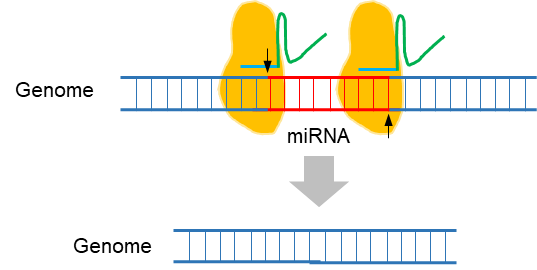
Our promise to you:
Guaranteed product quality, expert customer support.
 24x7 CUSTOMER SERVICE
24x7 CUSTOMER SERVICE
 CONTACT US TO ORDER
CONTACT US TO ORDER
Fragment Deleted Stable Cell Line 
CRISPR/Cas9 PlatformCB offers knockout stable cell line generation services for customers, including protein coding gene knockout and deletion of non-coding region (like lncRNA, miRNA). Based on excellent platform and leading-edge technology, our experienced scientist team serves our customers with high-quality products and services.
Since CRISPR/Cas nuclease was first introduced into eukaryotes, it shortly becomes the most widely used tool for genome engineering. Either coding region or non-coding region can be delete by genome-editing tools. CRISPR/Cas9 targets Cas9 nuclease to specific DNA sequence by guide RNA and introduces double strand break. Repair of the DSBs may result in indels, which lead to frame shift of gene and disrupt gene expression at endogenous level. In most cases, frame shift is sufficient to block function of genes. However, a single site of gene editing may be not sufficient to disrupt function when targeting to microRNA or other non-coding region. To overcome this limitation, paired guide RNA targeting both 5’ and 3’ of microRNA are introduced into cells simultaneously for whole region deletion. The large fragment deletion disrupts the structure of miRNA and then results in functional knockout. This strategy also applies to other region of genome, like lncRNA, promoter and enhancer.

CRISPR/Cas9 PlatformCB provides a fragment deletion service for different cell lines, including easy-to-handle cells, tumor cells and stem cells. By using CRISPR/Cas9, we have successfully generated thousands of knockout cell lines (pools or clones), covering from protein-coding genes to non-coding regions. With expert team, we are willing to assist you with your research goals in gene-editing field. Generating custom knockout stable cell line is welcome. We are waiting for your interesting project.
For more information, please feel free to contact us.
Reference
- F Ann Ran, et al. (2013) ‘Genome engineering using the CRISPR-Cas9 system’. Nature Protocols, 8
- A., G., et al. (2016) ‘Challenges of CRISPR/Cas9 applications for long non-coding RNA genes’. Nucleic Acid Research, 45
- T., H., et al. (2014) ‘Targeting non-coding RNAs with the CRISPR/Cas9 system in human cell lines’. Nucleic Acid Research, 43
- H., C., et al. (2016) ‘CRISPR/Cas9, a novel genomic tool to knock down microRNA in vitro and in vivo’. Scientific Reports, 6